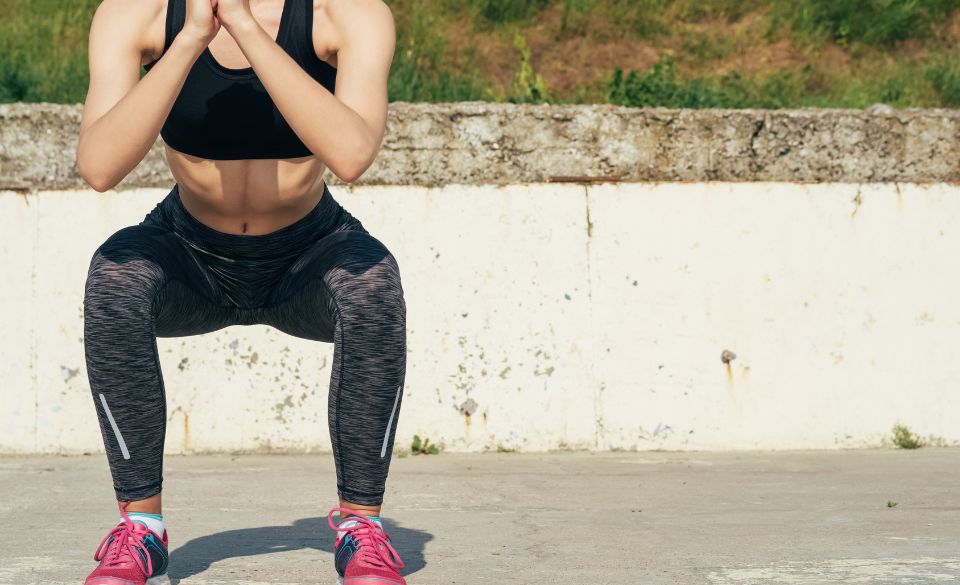
Reverse Squats: The Ultimate Guide
Page Contents
Reverse squats, also known as “assisted squats” or “box squats”, are a variation of the traditional squat exercise that are gaining popularity in the fitness world. While the traditional squat primarily targets the quadriceps, hamstrings, and glutes, the reverse squat shifts the focus to the hips and glutes, making it a great exercise for strengthening the posterior chain.
One of the key differences between the reverse squat and traditional squat is the placement of the box or bench. In a traditional squat, the athlete squats down until their thighs are parallel to the ground or lower. In a reverse squat, the athlete stands on a raised platform or bench, and squats down until their hips are below their knees, but without touching the bench. This eliminates the stretch reflex that is activated when the thighs touch the ground in a traditional squat, making the exercise more challenging and requiring greater strength and control.
In this article, we will provide a comprehensive guide to reverse squats, including how to perform the exercise with proper form, the muscles worked, variations of the exercise, and who can benefit from incorporating reverse squats into their workout routines. We will also highlight scientific studies supporting the effectiveness of reverse squats for muscle growth and strength gains.
So, whether you’re a seasoned athlete looking to switch up your lower body routine, or a beginner just starting out on your fitness journey, read on to learn everything you need to know about reverse squats and how to incorporate them into your workout routine.
What Are Reverse Squats?
As previously mentioned, the reverse squat is a variation of the traditional squat that involves standing on a raised platform or bench and squatting down until the hips are below the knees, but without touching the bench. This eliminates the stretch reflex that is activated when the thighs touch the ground in a traditional squat, making the exercise more challenging and requiring greater strength and control.
How to Perform a Reverse Squat
To perform a reverse squat, follow these steps:
1. Stand with your feet shoulder-width apart, toes pointed slightly outward, and your chest up and shoulders back.
2. Place a bench or raised platform behind you, and step back onto it so that your feet are shoulder-width apart and your heels are hanging off the edge.
3. Slowly lower yourself down into a squatting position, pushing your hips back and keeping your knees in line with your toes.
4. Once your hips are below your knees, push through your heels to stand back up, keeping your core engaged and your back straight.
Common Mistakes to Avoid While Performing the Exercise
While the reverse squat is a highly effective exercise, there are a few common mistakes that people tend to make when performing it. Avoiding these mistakes can help you achieve better results and reduce the risk of injury. Here are some common mistakes to avoid while performing the exercise:
Rounding your back: When performing a reverse squat, it’s important to maintain a neutral spine and avoid rounding your back. Rounding your back puts unnecessary stress on your spine and can lead to injury over time.
Letting your knees collapse inward: Letting your knees collapse inward during a reverse squat can put additional stress on your knees and cause pain and injury. Be sure to keep your knees in line with your toes throughout the exercise.
Failing to engage your core: The reverse squat requires a lot of core stability to maintain proper form. Failing to engage your core can lead to an unstable movement and put you at risk for injury.
Using too much weight: Using too much weight when performing a reverse squat can compromise your form and put you at risk for injury. Start with a lighter weight and focus on perfecting your form before increasing the weight.
Not lowering down far enough: In order to fully engage the glutes, hamstrings, and quadriceps, it’s important to lower down until your thighs are parallel to the ground. Failing to lower down far enough can limit the effectiveness of the exercise.
By avoiding these common mistakes, you can perform the reverse squat with proper form and reduce the risk of injury. Remember to start with lighter weight and focus on perfecting your form before increasing the intensity of the exercise. With practice and consistency, the reverse squat can become an effective part of your workout routine.
Benefits of Adding Reverse Squats to Your Workout Routine
Reverse squats are an excellent exercise to incorporate into your workout routine for several reasons. Here are some of the benefits of doing reverse squats:
Builds Strength: Reverse squats are a highly effective exercise for building strength in your glutes, hamstrings, calves, and lower back muscles. As you lower your body down onto the bench or raised platform, your muscles are forced to work harder to control the movement and maintain balance, leading to increased strength over time.
Enhances Stability: By working on your stability, reverse squats can help you to become more balanced and coordinated. The exercise engages the core muscles, as well as the muscles in your legs, which are responsible for maintaining stability and balance.
Improves Flexibility and Mobility: Reverse squats are a great way to improve your flexibility and mobility in the hips and lower back. This exercise requires a good range of motion in the hips and lower back, so with regular practice, you’ll improve your flexibility and mobility.
Decreases the Risk of Injury: By strengthening key muscle groups, reverse squats can help reduce the risk of injury in the lower back, hips, and knees. The exercise also strengthens the muscles that support the spine, which can help prevent lower back pain and discomfort.
Boosts Athletic Performance: Reverse squats are a functional exercise that can improve your performance in sports and other activities that require explosive power and speed. By building strength and stability in the lower body, you’ll be able to generate more power and move with greater agility.
Overall, adding reverse squats to your workout routine can be a game-changer for your lower body strength, stability, and mobility. Whether you’re an athlete looking to improve your performance or simply want to build a stronger and more balanced lower body, reverse squats are a must-try exercise.
Muscles Worked in Reverse Squats
Reverse squats are a fantastic exercise that primarily targets the lower body muscles. Here are the main muscles worked during reverse squats:
Glutes: The glutes are the primary muscle group worked during reverse squats. As you lower your body down onto the bench or raised platform, your glutes are activated to control the movement and maintain balance.
Hamstrings: The hamstrings, located on the back of your thighs, are also heavily engaged during reverse squats. As you lower your body down onto the bench or raised platform, your hamstrings contract to control the movement and keep your knees stable.
Quadriceps: The quadriceps, located on the front of your thighs, are also activated during reverse squats. They work to extend your knees and lift your body back up to a standing position.
Calves: The calf muscles are also engaged during reverse squats, particularly as you push off the balls of your feet to lift your body back up to a standing position.
Lower back muscles: The lower back muscles, including the erector spinae and multifidus, are worked during reverse squats as they are responsible for maintaining proper spinal alignment and balance during the exercise.
Core muscles: Your core muscles, including your abs and obliques, are also activated during reverse squats. They work to stabilize your spine and maintain proper form throughout the exercise.
Overall, reverse squats are an excellent exercise for targeting multiple muscle groups in the lower body and core. By incorporating this exercise into your workout routine, you can build strength, improve stability, and enhance your overall physical fitness.
Different variations of reverse squats
Reverse squats are a versatile exercise that can be modified to target different muscle groups and add variety to your workout routine. Here are some variations of the reverse squat:
Bulgarian split squat: This variation involves placing one foot behind you on a bench or raised platform while performing a reverse squat with the other leg. This variation targets the glutes, hamstrings, and quadriceps of the working leg while also engaging the core for balance.
Goblet reverse squat: This variation involves holding a weight, such as a kettlebell or dumbbell, at your chest while performing a reverse squat. This variation targets the same muscle groups as the traditional reverse squat while also engaging the biceps and forearms.
Sumo reverse squat: This variation involves standing with your feet wider than shoulder-width apart and toes pointed outward while performing a reverse squat. This variation targets the inner thigh muscles, as well as the glutes, hamstrings, and quadriceps.
Single-leg reverse squat: This variation involves performing a reverse squat on one leg while the other leg is lifted off the ground. This variation targets the glutes, hamstrings, and quadriceps of the working leg while also engaging the core for balance.
Elevated reverse squat: This variation involves performing a reverse squat on a raised platform or bench, increasing the range of motion and targeting the glutes, hamstrings, and quadriceps more intensely.
Incorporating these variations into your workout routine can provide a new challenge to your muscles and keep your workouts fresh and interesting. As with any exercise, it is important to start with proper form and gradually increase the intensity and difficulty of the exercise over time.
Final Words – Reverse Squat
In conclusion, the reverse squat is a challenging and effective exercise that targets the glutes, hamstrings, and quadriceps while also engaging the core for stability. By adding reverse squats to your workout routine and incorporating variations such as Bulgarian split squats, goblet reverse squats, sumo reverse squats, single-leg reverse squats, and elevated reverse squats, you can work different muscle groups and avoid hitting a plateau in your fitness journey.
Remember to always perform the exercise with proper form, avoiding common mistakes such as rounding the back or letting the knees collapse inward. With consistency and dedication, incorporating reverse squats into your fitness routine can lead to stronger legs, better balance and stability, and an overall improvement in your physical health.
So, whether you’re a beginner or an experienced athlete, give reverse squats a try and see the benefits for yourself.



